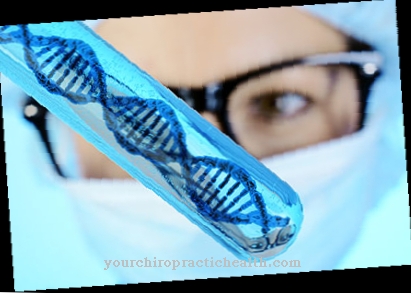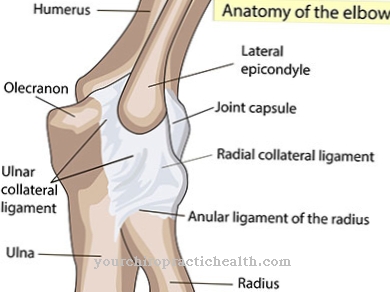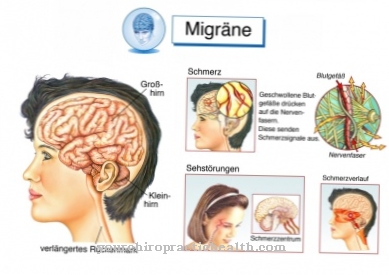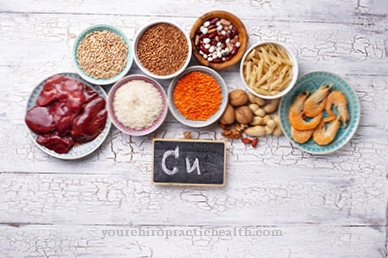A Stenosis comes in different forms that can affect a variety of different areas of the human body. The causes of a stenosis are, for example, inflammation, tumors or arteriosclerosis. The best-known stensoses are the auditory canal stenosis, pyloric stenosis, aortic valve stenosis, carotid stenosis and coronary stenosis.
Ear canal stenosis
Ear canal stenosis is a narrowing of the external ear canal. A distinction is made here between congenital stenosis and a later acquired auditory canal stenosis. They usually start from the cartilaginous part of the ear canal or the bony part. A stenosis can also originate from the lining of the ear canal.
The main causes of ear canal stenosis are inflammation and tumors. Scar shrinkage after an operation or exostoses can also trigger the disease.
A stenosis of the ear canal is usually noticeable to the affected person through a lower level of sound perception. This can occur in both ears or only in one. The stenosis can usually only be removed surgically.
Pyloric stenosis
A pyloric stenosis is the narrowing of the stomach outlet. This is usually triggered by hypertrophy of the so-called gastric gatekeeper. The sphincter muscle of the stomach is enlarged and thus narrows the stomach outlet.
An obstruction of the lumen can also contribute to a stenosis. The interior of a hollow organ, here the stomach, is referred to as the lumen. Scarred adhesions can also be the cause. These usually arise as a result of a stomach ulcer or a carcinoma.
Fighting the causes can be done both medically and surgically. This is mainly related to the severity of the causes. When the lumen is relocated, vomiting can help the person concerned.
Aortic stenosis
Aortic valve stenosis is a heart valve defect. The aortic valve functions as a valve between the left heart valve and the large main artery, the aorta. This aortic valve is narrowed when there is a stenosis.
In the case of aortic valve stenosis, a distinction is made between a congenital and a later acquired stenosis. Congenital defects are primarily the narrowing of the valve ring, as well as a thickening or agglomeration of the valve pockets.
Frequently, a smaller number of pockets also leads to a stenosis. Basically, a healthy person has three pockets. In the case of congenital stenosis, one of these is usually missing. A stenosis acquired later, on the other hand, is mainly caused by inflammation.
Symptoms depend on the severity of the stenosis. Affected people may not have any complaints at all, while other people suffer from severe shortness of breath during strenuous activities. Aortic valve stenosis can only be repaired surgically.
Symptoms, ailments & signs
If there is a stenosis, symptoms do not necessarily have to occur initially. The narrowing of the spinal canal can therefore initially remain undetected. The first symptoms only appear at an advanced stage, when the nerves of the blood vessels are attacked. The affected person suffers more from back pain.
The degree of pain can fluctuate widely and depends on how the disease progresses. The respective posture and activities of the person concerned also play a role. People often feel pain relief when they keep their spine flexed. This can be explained by the stretching of the spinal canal.
The nerves are then less constricted and the lower back pain is correspondingly less pronounced. Stooping or cycling, for example, bring relief. Those who go uphill will also feel less discomfort. In general, a stenosis has a diverse and often less characteristic symptomatology. The symptoms get worse over time.
The muscles in the lower back are tense. The pain radiates from the back to the legs. Later on, the leg muscles become weaker and the legs may feel uncomfortable. A stenosis can also be indicated by disturbed bowel movements or problems urinating.
Carotid stenosis
Carotid stenosis is the narrowing of the common carotid artery. This arises on the left side of the aortic arch and on the right side of the brachiocephalic trunk. The main task of the common carotid artery is to supply the head and neck with blood. This is narrowed in a stenosis.
Carotid stenosis is largely due to arteriosclerosis. This is understood to mean the deposition of fat, thrombi, connective tissue and calcium in the blood vessels. These constrict the blood vessels and are the main cause of a mostly life-threatening stenosis in 90 percent of cases.
Old age and smoking can also contribute to the rapid development of stenosis. Diabetes and a disruption of the pressure in the blood can also significantly increase the risk of developing a stenosis.
Carotid stenosis is usually treated surgically to remedy the life-threatening situation.
Coronary stenosis

© lom123 - stock.adobe.com
The narrowing of so-called coronary arteries is called coronary stenosis. Such a narrowing is usually detected by coronary angiography, electron beam tomography, or cardiac CT. An exercise ECG can also be helpful for determining this. Stress echocardiography, stress MRI and myocardial scintigraphy are often performed at the same time in order to be able to make a reliable diagnosis. Coronary stenosis is also mainly repaired by surgery, which can vary in size depending on the severity.
Complications
Depending on which organ is affected, stenosis can cause various complications. A stenosis of the ear canal usually causes hearing problems that can develop into complete hearing loss. Intestinal stenosis is usually associated with severe diarrhea or constipation for those affected and can lead to dehydration and deficiency symptoms in the further course.
In individual cases, the narrowing causes irreversible intestinal damage. Aortic valve stenosis is a heart valve defect that can be associated with severe shortness of breath, cardiac arrhythmias and other complications. Carotid stenosis, i.e. the narrowing of the neck and neck arteries, repeatedly results in life-threatening complications. Strokes and heart attacks are typical. A pyloric stenosis is a narrowing of the stomach outlet.
This can cause symptoms such as constipation, intestinal obstruction and, rarely, stomach cancer. When treating stenosis, the risks come from surgery. Because it is a complicated procedure, nerve injuries or bleeding occur time and again. Infections and wound healing disorders cannot be ruled out either. The accompanying medication prescribed may cause side effects and interactions.
When should you go to the doctor?
A doctor should be consulted in the event of back pain, general malaise or a decrease in physical performance. If the person concerned suffers from a vague feeling of illness, changes in normal posture or irregular movements, he needs help. If usual sporting or everyday activities cannot be carried out, a doctor should be consulted.
If there are abnormal sensations or sensitivity disorders, further examinations are necessary to clarify the cause. If irregularities occur when going to the toilet or disorders of the gastrointestinal tract, this is a sign of a health impairment. In the case of diarrhea, constipation or an obstruction of the intestine, medical care is indicated for the person concerned. If existing complaints increase in scope and intensity or if the health problems persist over a longer period of time, a doctor's visit is necessary.
A diagnosis is required so that a treatment plan can be established. Muscle abnormalities, hearing impairment or a general deficiency symptom must be presented to a doctor. Disorders of the heart rhythm, shortness of breath or irregularities in consciousness must be examined and treated. Since severe stenosis can lead to a life-threatening condition, the person affected should consult a doctor as soon as the first disturbances and abnormalities occur. If there is a stiff neck or impaired blood circulation, a doctor's visit is also recommended.
Aftercare
A stenosis is a collective term for various diseases caused by the narrowing of hollow organs and / or vessels. Therefore, no single valid statement can be made here about aftercare. Follow-up care is as varied as the stenosis itself. It is primarily based on the previous measures that were required for treatment and rectification. Often stents are inserted or other invasive surgical procedures are required.
Follow-up care is therefore very much related to the effects and after-effects on the patient of a surgical procedure. Any surgical wound that may be present must be checked and cared for, and of course the success of the treatment must be determined in the follow-up care - here, as a rule, imaging procedures, possibly in connection with contrast media, are used. The hollow organ must be and remain permeable again.
Nor can it be generally determined whether long-term use of medication is necessary. In certain cases it may be necessary to use substances that prevent the vessel from closing again. The specialist direction varies depending on the localization of the stenosis and different specialist areas can be affected here. The patient should absolutely keep all follow-up appointments and seek individual advice from the relevant specialist, as a stenosis or a renewed closure can have very restrictive effects.
You can do that yourself
The stenosis can be in different parts of the body. It is a collective term. This results in innumerable perspectives. If the typical symptoms occur, you should generally refrain from self-therapy. Because the symptoms can take a life-threatening course.
In everyday life, however, patients should support their recovery. Sufficient physical activity and a balanced diet are considered to be promising. Suitable drinks are juices, teas and water. On the other hand, alcohol and beverages containing caffeine should be avoided. Nicotine consumption is also considered harmful.
Certain herbs and plants are said to have healing properties. These help, for example by rubbing in externally, to dissolve constrictions in the affected areas. Garlic, fennel, sage and thyme belong to this group, among others. Depending on the symptoms, massages and breathing exercises promise relief. Some patients rely on essential oils like frankincense oil and clove oil.
The effect of alternative methods is not clearly scientifically clarified. They cannot replace a visit to the doctor. In no case do they produce a full recovery. Hereditary malformations and chronic diseases that lead to stenosis appear problematic. Consultation with a doctor is vital in these cases.




.jpg)
.jpg)





















